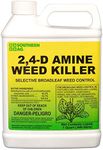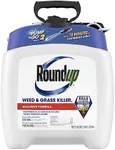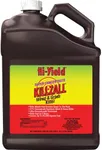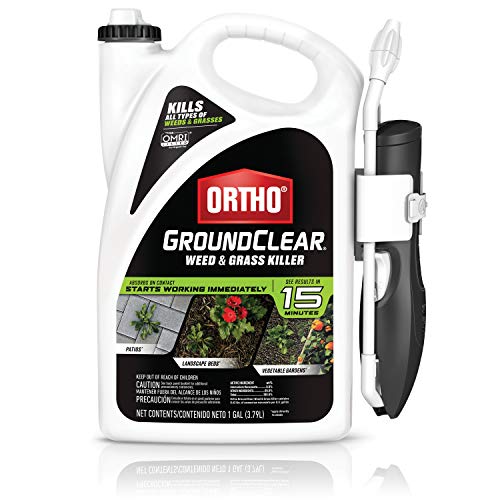Buying Guide for the Best Liquid Weed Killers
Choosing the right liquid weed killer can make a significant difference in maintaining a healthy and attractive garden or lawn. The key to selecting the best product is understanding your specific needs and the characteristics of the weed killer. Here are some important specifications to consider when making your choice.Type of Weed KillerWeed killers can be classified into selective and non-selective types. Selective weed killers target specific types of weeds without harming other plants, making them ideal for lawns and gardens where you want to preserve certain plants. Non-selective weed killers, on the other hand, kill all vegetation they come into contact with, which is useful for clearing areas completely. Choose a selective weed killer if you need to protect your grass or garden plants, and a non-selective one for areas where you want to eliminate all plant growth.
Systemic vs. ContactSystemic weed killers are absorbed by the plant and travel through its system to kill it from the inside out, which is effective for perennial weeds with deep roots. Contact weed killers, however, only affect the parts of the plant they touch, making them suitable for annual weeds or surface-level infestations. If you are dealing with deep-rooted, persistent weeds, a systemic weed killer is the better choice. For quick results on surface weeds, a contact weed killer will suffice.
Active IngredientsThe active ingredients in weed killers determine their effectiveness and safety. Common ingredients include glyphosate, 2,4-D, and dicamba. Glyphosate is a non-selective herbicide effective against a wide range of weeds, while 2,4-D and dicamba are selective and target broadleaf weeds. Understanding the active ingredients helps you choose a product that is effective against the specific weeds you are dealing with. Always read the label to ensure the product is suitable for your needs and safe for the environment.
Application MethodLiquid weed killers can be applied using different methods, such as sprayers, hose-end applicators, or ready-to-use bottles. Sprayers allow for precise application and are ideal for large areas or spot treatments. Hose-end applicators are convenient for covering large lawns quickly. Ready-to-use bottles are perfect for small areas or individual weeds. Consider the size of the area you need to treat and your comfort with the application method when choosing a product.
RainfastnessRainfastness refers to how quickly a weed killer becomes resistant to being washed away by rain. This is important because if it rains soon after application, the effectiveness of the weed killer can be reduced. Products with a shorter rainfast period are more convenient, especially in areas with unpredictable weather. Check the label for rainfast information and choose a product that suits your local climate and weather patterns.
Safety and Environmental ImpactSafety for humans, pets, and the environment is a crucial consideration. Some weed killers can be harmful if ingested or if they come into contact with skin. Additionally, certain products can have negative effects on the environment, such as contaminating water sources. Look for products that are labeled as safe for use around children and pets and those that have minimal environmental impact. This ensures that you can maintain your garden without compromising safety.





















